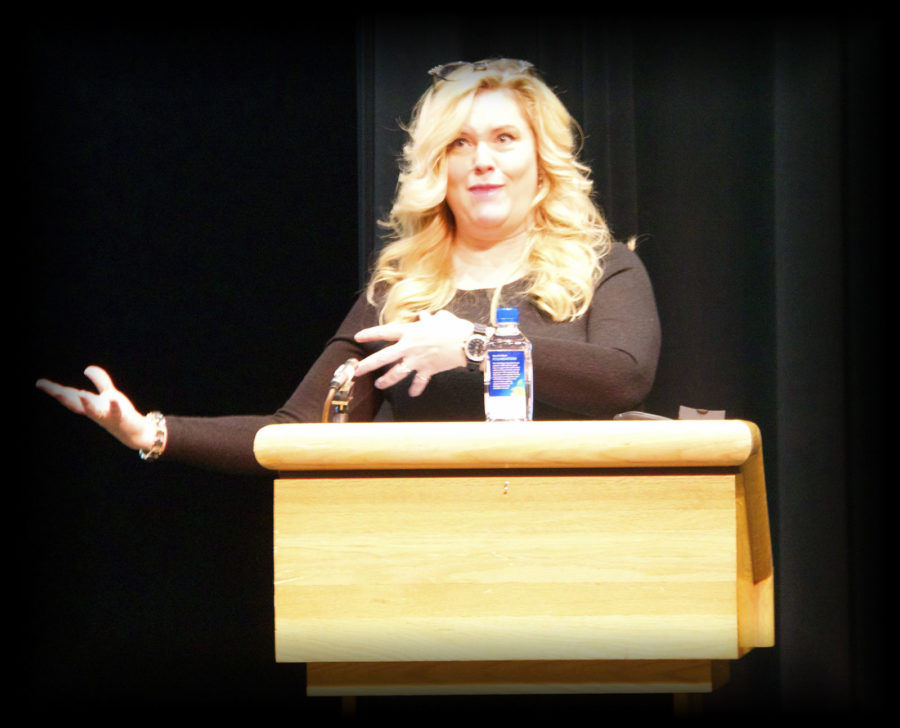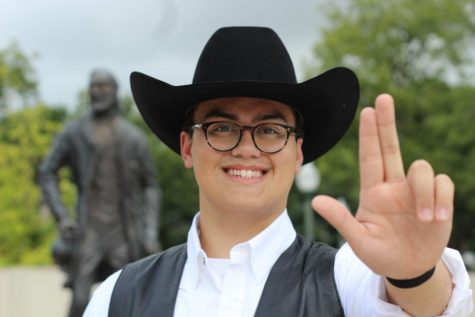Heather Ann Thompson is latest speaker in “State of American Society” series
February 15, 2016
On Thursday February 11, Heather Ann Thompson, PhD, history professor, internationally acclaimed author, and expert on the history of mass incarceration became the latest keynote speaker in the “State of American Society” speaker series. Thompson’s lecture Thursday evening informed a crowded auditorium of students, faculty, and members of the public, of the impacts of mass incarceration on communities, the economy, and democracy. Her speech focused on public policy as both the root cause and ultimate solution to this issue she boldly deemed “the civil rights crisis of the twenty-first century.” Thompson argues that above other civil rights issues such as income inequality, education disparity and issues with problems of housing availability, mass incarceration is the biggest civil rights crisis of the twenty-first century because it exacerbates every other current civil rights issue.
During her lecture, Thompson used a historical framework punctuated with graphic slides illustrating staggering statistics surrounding mass incarceration rates in our country. One graph in Thompson’s lecture depicted the United States towering above France, Italy, Germany, Switzerland, and the United Kingdom with the highest incarceration rate in the world— 716 per 100,000 of the national population—more than two million people behind bars and nearly 22 percent of the world’s prisoners. Slide after slide, Thompson’s speech presented a persuasive argument that the United States’ incarceration rates are unprecedented, both historically and internationally. She points out that these rates are not only unique in their sheer numbers but also by their demographic breakdown, being “overwhelmingly comprised of a black and brown population.” Against what some may assume as a result of African-Americans and Latinos committing more crimes, Thompson segued into another series of graphs and statistical research demonstrating incarceration by race, and underlining that the disproportional racial makeup of our prisons can actually be equated more to “where we are looking for crimes to be committed” than to who is actually committing the crimes. She introduced the process called “criminalization of urban space” by using the example of drug use, citing white populations as representing the largest demographic of both drug users and sellers while their black and brown peers remain the largest demographic in our prisons.
Thompson illustrated that this issue of mass incarceration has distorted our democracy by changing our cities, our schools, and our voting system, by making things that were once illegal, now “much more illegal.” The penalties get much higher, the sentences much longer, and the offenses begin to be seen as much more serious than before. Thompson states that this process, marketed to the American public as a guise that makes our society safer, using terms like the ‘War on Crime’ or the ‘War on Drugs’, is “a policy choice and not a crime imperative.” This process incentivizes arrests by offering increased funding to police departments across the nation that demonstrate need. That is, ‘need’, demonstrated by areas in which crime is higher, with more arrests, more drug charges, and more criminals sentenced to jail time. Thus, Thompson argues, a vicious cycle begins that has inflated our prison population nationally. Crime itself has not changed, but the way crime is counted and the significance of various crimes has continuously increased in the last two decades.
Aside from the unbelievable economic costs, self-defeating cycle of recidivism resulting from the inability for convicted felons to work or receive government aid post-prison, which Thompson also discussed at length, she spoke of the entanglement between our nation’s economic, social, and political institutions and our criminal justice system, which has influenced our political process so much that our democracy itself is now threatened through prison disenfranchisement. The same citizens occupying the beds of our prisons nationwide, who are counted as residents in each county’s census population for the purpose of political representation, are not permitted to vote. Thompson illustrates that many districts now meet federal minimum population requirements as a result of “prison gerrymandering,” or counting prisoners as constituents for political power and drawing district lines accordingly, knowing full well these same prisoners cannot vote.
Thompson began her lecture asking for a show of hands as to who valued democracy, or the idea of “one person, one vote.” Waves of hands shot into the air across the auditorium.
Thompson offered hope that we can correct these issues through voting, by persuading those who have the ability to vote to do so, by movements on college campuses like Tarleton to ‘ban the box’ and eliminate the requirement of felons to state if they have been convicted of a felony on job applications and other documents, by voting for education, job training programs, and criminal justice reform. History professor and event organizer, Dr. Michael Landis poignantly adds, “We are a country that locks our own people up. Isn’t that part of the definition of tyranny? We think of ourselves as free Americans, but are we that free? We are losing our vote, indirectly. This is an area where people proclaim love of country. Let us then be honest about what this country does with it’s own citizens. That is worth spending time on. Mass incarceration matters. Even if it’s not a personal experience.”






